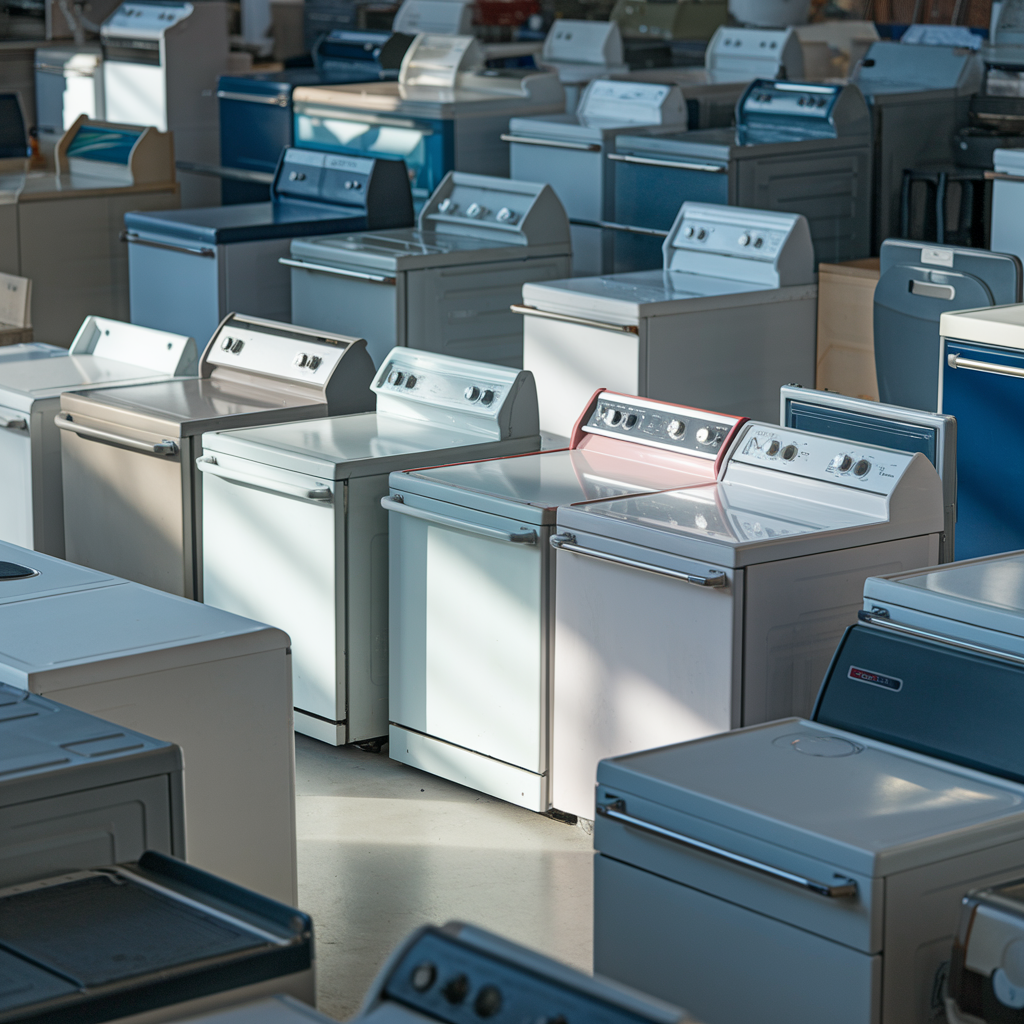Most dishwashers come with several standard cycle options designed to handle different levels of soiling and types of dishware. Common cycle options include:
Normal Cycle: Suitable for everyday loads with typical soiling.
Heavy Duty/Pots and Pans: Designed for heavily soiled dishes or cookware, using higher water temperature and stronger water pressure.
Quick Wash: A faster cycle for lightly soiled dishes, generally completed within 30 minutes to an hour.
Eco or Energy Saver: Focuses on reducing energy and water consumption, ideal for lightly soiled dishes.
Unique wash cycle settings found in some dishwashers cater to specialized needs:
Sanitize Cycle: Uses higher water temperatures to eliminate bacteria and sanitize dishes, a great option for households with infants or those prone to illness.
China/Crystal Cycle: Gently cleans delicate items like fine china and glassware, using lower water pressure and temperature.
Steam Clean: Uses steam to help loosen tough, baked-on food without needing pre-rinsing.
Sensor Wash: Adjusts the wash cycle duration and water usage based on the level of soil detected on the dishes.
Racks
Standard dishwashers typically come with two racks:
Upper Rack: Designed for smaller items such as cups, glasses, and small bowls.
Lower Rack: Meant for larger items like plates, pots, and pans.
However, many modern dishwashers feature additional special rack layouts and features:
Third Rack: A shallow rack at the top for utensils and flatware, freeing up space in the lower racks.
Adjustable Racks: Can be raised or lowered to accommodate larger items like tall pots or stemware.
Fold-Down Tines: Allow flexibility in organizing the dishwasher to fit odd-shaped items.
Specialized Holders: For wine glasses, bottle washers, or cutlery trays, ensuring safe and efficient cleaning.
Noise Level
Dishwasher noise levels are measured in decibels (dB). A typical dishwasher ranges between 40 to 60 dB. Here’s a quick guide:
40-45 dB: Very quiet; you might not hear it running.
45-50 dB: Quiet; sounds like a soft conversation.
50-60 dB: Noticeable; more like normal conversation noise.
For shoppers prioritizing quiet operation, look for models with a noise level below 45 dB. Sound insulation, quality of motor components, and design of the wash system affect noise levels. Dishwashers labeled “quiet” or “ultra-quiet” often use advanced insulation and motor technology.
Energy Efficiency
If energy efficiency is a priority, look for the following features:
ENERGY STAR Certification: Ensures the dishwasher meets specific energy efficiency guidelines.
Soil Sensors: Detect the soil level of the dishes and adjust the wash cycle and water usage accordingly.
Half Load Options: Allows you to wash a smaller load without using a full cycle, saving water and energy.
Eco Mode: Reduces the temperature and water usage for a more energy-efficient wash cycle.
Heated Dry vs. Air Dry: Models that offer an air-dry option consume less energy than those relying on heated drying.
Price
The typical price range for a new dishwasher is $300 to $1,500. Here’s a breakdown:
Budget Models ($300-$500): Basic features, usually louder, fewer cycle options, and fewer advanced features.
Mid-Range Models ($500-$1,000): Quieter, more cycles and features, better energy efficiency, and better rack configurations.
High-End Models ($1,000-$1,500+): Extremely quiet, advanced features like smart connectivity, superior energy efficiency, multiple specialized cycles, and premium materials.
Factors driving the price include brand reputation, features, capacity, noise level, materials, and additional technologies (like smart connectivity). To find a model within your budget, consider your most important features and look for sales, discounts, or outlet options.
How Long Does a Dishwasher Last?
A dishwasher typically lasts between 7 to 12 years, depending on the quality of the appliance, frequency of use, maintenance, and water quality in the area. Regular cleaning, proper usage, and timely repairs can help extend the life of your dishwasher.
How to Clean a Dishwasher?
To keep your dishwasher running efficiently and smelling fresh, regular cleaning is essential:
Clean the Filter: Remove and rinse the filter under warm water to clear out trapped food particles. Do this every few weeks or monthly.
Wipe Down the Door and Gaskets: Use a damp cloth and mild detergent to clean around the door and rubber gaskets to prevent mold and mildew.
Run a Vinegar Cycle: Place a cup of white vinegar in a dishwasher-safe container on the top rack and run a hot water cycle to remove grease and odors.
Use Baking Soda: Sprinkle a cup of baking soda at the bottom and run a short, hot water cycle for additional odor control and stain removal.
Clean Spray Arms: Remove and clean the spray arms to unclog holes that might be blocked by debris.
Can I Install a Dishwasher Myself or Should I Hire a Professional?
Installing a dishwasher can be a DIY project if you have the necessary skills in plumbing and electrical work. Key steps include:
Disconnecting and Removing the Old Dishwasher.
Connecting the Water Supply Line.
Wiring the Electrical Connection.
Securing the Dishwasher in Place.
Connecting the Drain Hose.
However, if you’re not confident or experienced with electrical and plumbing work, hiring a professional is safer and ensures proper installation, avoiding potential issues like leaks, electrical hazards, or voiding the warranty. At ZapFixers, we always recommend professional installation to ensure everything is done correctly and safely.
